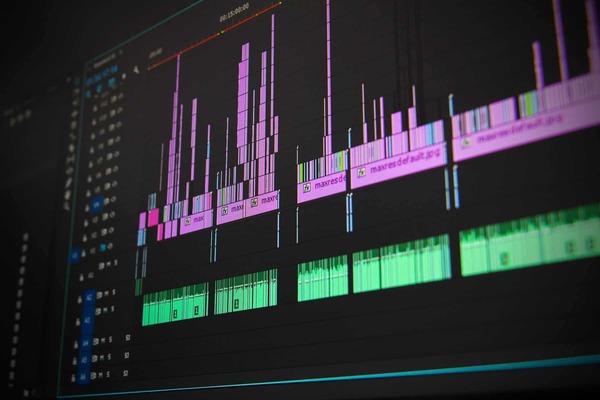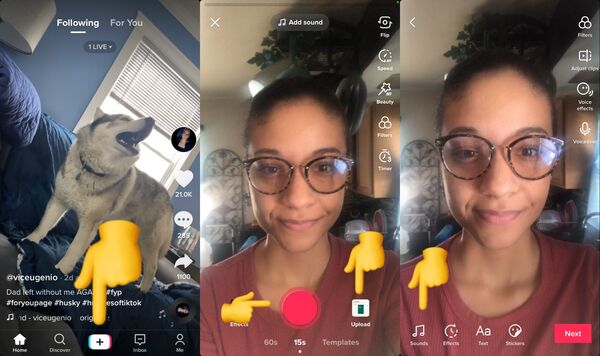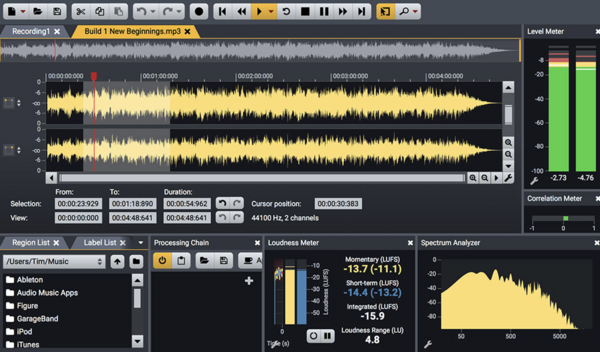What Happens When AI has Read Everything
The AI systems have read, analyzed, and digested the entire collective knowledge of humanity. What happens when AI has read everything?

To make a TikTok video that stands out, you must ensure the audio is on point. Here's a guide to editing sound for a TikTok video in 2023.
Since its launch in late 2016, TikTok has become an increasingly popular platform for users to share short videos. As the app continues to evolve, it's not surprising that more and more people are interested in learning how to edit sound for their TikTok videos. With the ever-evolving technology in 2023, editing sound for TikTok videos is more accessible. This article will explain exactly how to edit sound for a TikTok video in 2023, from selecting the right equipment and software to mastering the basics of audio editing. Whether you're just starting or have some experience with audio editing, this guide will give you all the information you need in to make your video sound perfect!
Table of contents [Show]

When completing any project, having the right tools is essential. The tools you need may vary depending on what you are working on. For example, if you are doing a carpentry project, you’ll need hammers, saws, drills, and screwdrivers. If your project involves electronics, you will likely need soldering irons, wire cutters, and pliers.
For painting projects, paintbrushes and rollers are necessary. Regardless of the task at hand, having the right tools makes the job easier and allows for better results. It is essential to inventory your tools and determine which ones are needed for each specific task. With the right set of tools, any project can be quickly completed!

1. Familiarize yourself with the audio editing software you are using. A basic understanding of the tools available and how they work is essential.
2. Learn how to import audio files into your program. This typically involves transferring them from a digital device or downloading them online.
3. Learn the tools and processes used in audio editings, such as equalization, normalization, compression, reverb, and mastering.
4. Know how to adjust levels and apply effects to your audio file to achieve the desired sound you are looking for.
5. Understand the basics of mixing multiple tracks for a final song or podcast episode mixdown.
6. Become familiar with output formats to save your project in a format suitable for sharing or streaming online.

1. Cleaning Audio: Cleaning audio is the process of removing unwanted background noise from a recording. This is done through audio editing software such as Pro Tools or Adobe Audition. By using different filters and effects, it's possible to reduce or remove any hisses, pops, clicks, and other noises that can be distracting from the main sound.
2. Compression: Compressing audio is a technique used to even out the volume levels of a recording by reducing the dynamic range. This helps to create a more consistent sound level throughout the entire track.
3. EQ (Equalization): Equalizing audio adjusts the frequency balance to achieve a desired sound. Different frequencies can be boosted or cut to make certain sounds stand out or be more subtle in a mix.
4. Reverb & Delay: These effects create depth and space in a mix by adding artificial reverberations and echo to recordings. Reverbs and delays can help add texture and atmosphere to tracks, making them more immersive and engaging for listeners.
5. Automation: This allows for precise control over specific parameters, such as volume, panning, EQ settings, etc., at different points throughout the track to achieve a desired effect or desired mix.

1. Read the instructions carefully: Carefully reading the instructions and following them to a tee will help you get the best results with whatever product or task you are working on. Not following instructions can lead to mistakes and unsatisfactory results.
2. Use quality materials: Quality materials are essential for getting good results. Whether it’s painting, fabric, wood, or any other material, using the best quality available is necessary to get the best results.
3. Don't rush: Taking your time when working on a project can make all the difference in getting good results. Running through a project can often lead to mistakes and subpar results that could have been avoided if more care had been taken.
4. Practice makes perfect: Practicing whatever task you are trying to master will help you become better at it over time and help you achieve better results each time you tackle it.
5. Ask for help if needed: If something isn’t turning out as expected or if you are stuck and don’t know how to proceed, don’t be afraid to ask for help! Plenty of people have gone before us who can provide valuable advice on how to get the best results possible!

1. Tap the “+” icon in the lower-left corner of the screen.
2. Select the “Music” tab at the top of the screen.
3. Search for music by tapping the search box at the top of the screen and typing in a keyword or artist name. You can also filter your search results by categories like “Popular,” “Genre,” and “Moods & Themes.”
4. When you find a song you want to use, tap it to preview it in your video before adding it to your clip. If you like what you hear, hit “Add Music” to add it to your video clip.
5. Once you add music to your video, you can adjust its volume level and start/end time by tapping the music icon on the bottom left corner of your screen while playing back your video clip in editing mode.

1. Open your audio editing software and import the audio you wish to export.
2. Make any necessary tweaks or adjustments to the audio.
3. When you are satisfied with the results, go to the “File” menu and select “Export” or “Save As,” depending on the program you are using.
4. Choose a file format for your exported audio from the drop-down menu. Popular designs include MP3, WAV, AIFF, AAC, FLAC, and OGG Vorbis.
5. Select a file name for your exported audio and save it on your hard drive or another storage device where you can easily access it later for playback or further processing if desired.
The most critical details in this article are the tools needed to edit sound for TikTok videos in 2023, the basics of audio editing, and advanced audio editing techniques. Cleaning audio removes unwanted background noise, while compression and EQ adjust frequency balance to create a desired sound. Quality materials are essential for getting good results. Practice makes perfect, don't rush, and ask for help if needed to get the best results.
Editing audio on TikTok is very simple. To do this, tap the “Add Sound” button at the bottom of your video. This will open up a library of audio clips, sound effects, and music available for you to use. You can search through the library or upload your audio file. Once you have selected an audio clip, you can adjust the volume and start and end points of the clip as desired.
Unfortunately, TikTok cannot trim sound clips. This is because the app was designed mainly for creating short videos and editing clips, which does not require audio trimming.
No, you cannot edit the audio on TikTok. However, you can choose from various soundtracks and filters to enhance your videos.
To cut and edit sounds on TikTok, you can use the “Trim” tool on the recording screen. To access this tool, tap the icon that looks like a scissor at the bottom of the recording screen. You can then drag the sliders to select which part of your sound to keep and discard the rest. You can also adjust the volume and speed of your sound by tapping on the “Speed” or “Volume” icons.
She'd made her decision, and she was terrified, despite the fact that she remembered how small she was.
The AI systems have read, analyzed, and digested the entire collective knowledge of humanity. What happens when AI has read everything?
If you want to withdraw your Coinbase account to your PayPal account, you've come to the right place. Follow these simple steps, and you'll have your money quickly.
Don't know how to make text move in CapCut? Check out this quick and easy guide that will show you how to make your text move in CapCut in no time!


